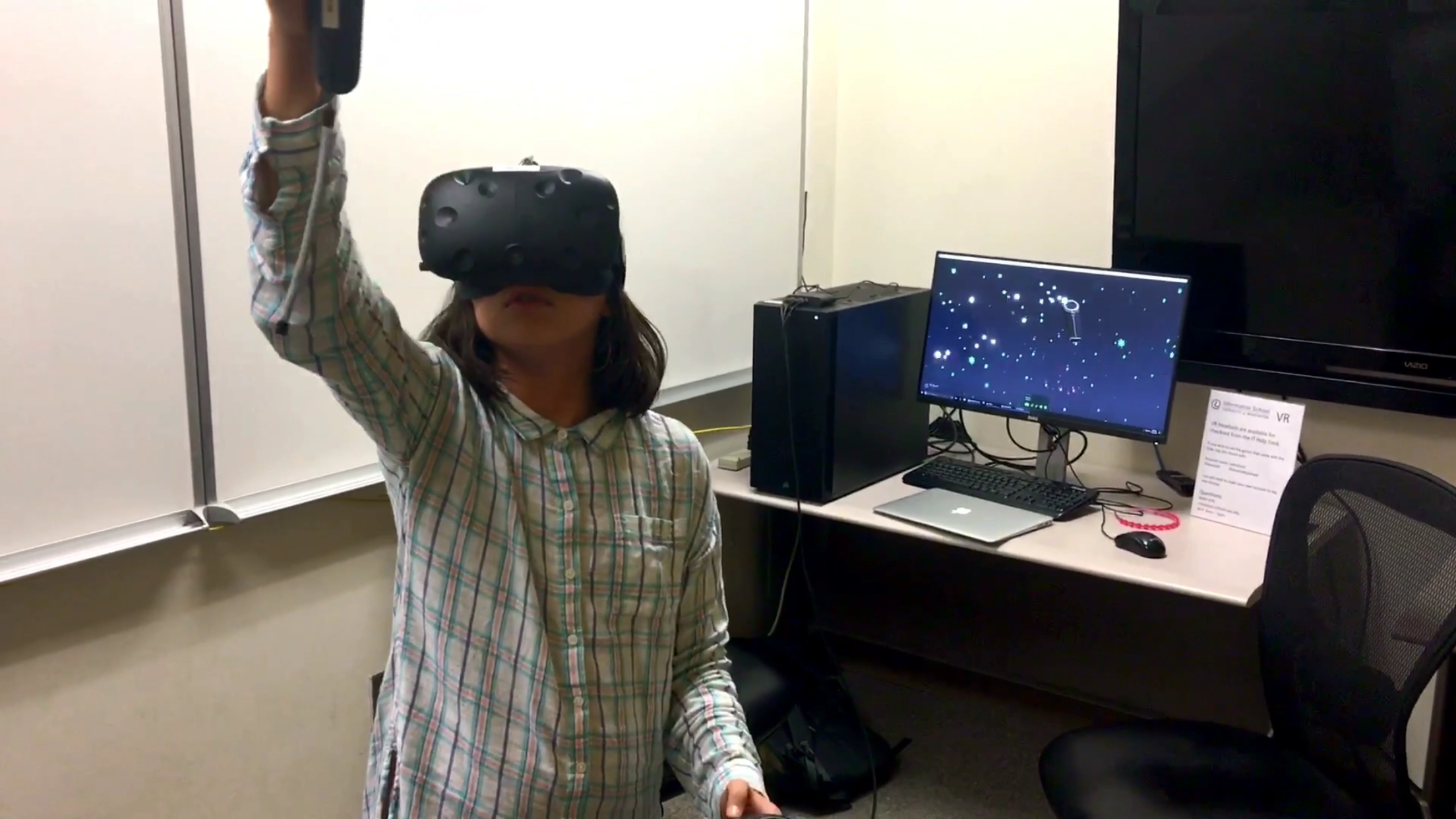Family and friends were able to try Tilt Brush on HTC Vive as the team set up.
Metadata Virtual Reality User Study
Class project for INFX 536 Metadata for Interactive Media
Quarter: Fall 2016
Team Size: 4
The Game Research (GAMER) Group at the University of Washington created a video game metadata schema (VGMS) to preserve information about video games. As virtual reality devices and games gain in popularity, there was a need to determine whether additional metadata should be added to the schema to preserve information about virtual Reality Games.
My role
Project Manager, User Researcher
- Scheduled user tests, created timelines
- Designed questionnaire & interview protocol
- Interviewed users
Method
Questionnaire Design & Interview Protocol
After determining the needs and research interests of the GAMER Group and examining the VGMS, we designed a questionnaire to explore users' opinions about the games they tried.
User Test
- Users answered questions about themselves and gaming experience
- Users chose a game to play on either the Oculus Rift or the HTC Vive
- While playing, users were asked to describe their experience
- After, users were asked which search terms they would use to find the games they tested, their general impressions and physical reactions
Major Findings
Immersiveness Indicator
All users suggested "immersive" as a tag they would use to describe the games, but indicated that some games were more immersive than others. Level of immersion was subjective.
Physical Movement
Physical movement required within a game was suggested as metadata to collect for the VGMS for a few reasons. First, level of immersion in a game appeared to be related to the amount of movement required to play the game. Second, physical movement requirements are necessary for accessibility for individuals with disabilities.
